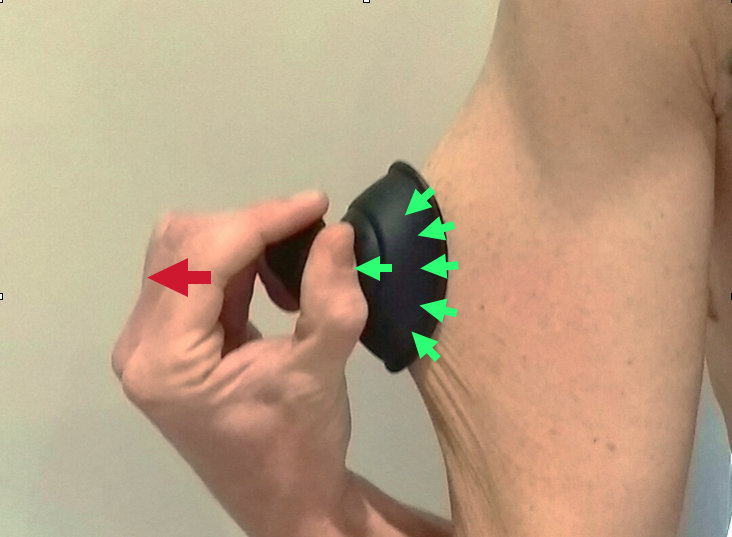From RockPod tutor, Daniel Lawrence @ThePhysioChannel
We often describe cupping as a manual therapy tool to decompress – Lifting in a world of pushing. In this short blog we report that compression is still a feature of cupping!
The skin and deeper soft tissue is stretched up into the cup as soon as a vacuum is created. A vacuum is defined as any drop below atmospheric pressure. Of the vacuum methods previously described, the external hand pump method is one of the safest and most common options. RockPods are a type of silicone cup that do not require a vacuum pump, instead the vacuum is created by the simple deformation and reformation of the pod. Silicone pods are considered beneficial for speed of application and ease of cleaning.
Cupping is an ancient medical treatment. Like many traditional treatments, its long history is embedded with folk wisdom that lacks a biologically plausible mechanism. In this blog we will review some of the findings from an excellent paper by Tham, Lee & Lu (2006) who studied cupping from a biomechanical perspective.
The unique feature of cupping is the vacuum and the distinct feeling of skin tension that it creates, here we will focus on the science that explains the scale and distribution of the tensile and compressive forces that accompany this therapeutic modality.
Contact between the cup and the skin creates a ring of compression directly under the rim of the cup. Most cups have rolled edges and silicone cups have a flat edge to disperse this compressive force. A vacuum device with a sharper rim would give rise to the higher compressive force and be a potential cause of discomfort. This is important to remember when applying cups to painful regions, although the cup lifts the skin, it does so by compressing the skin underneath its perimeter rim. Care should be taken to ensure a comfortable placement or to utilise a sufficiently wide enough cup that spans over a painful region.
We often refer to the skin within the cup as undergoing decompression as it is sucked up into the cup. This is supported by simple ultrasonography reports that show increases in the subcutaneous space. It is also important to understand how this decompression occurs and the tensile nature of the physical stress it places on the tissues down below the skin.
Tham and colleagues (2006) noted that the tensile stress mostly occurs in the mid portion of the cup and extends down to the muscle layer. The maximum tensile stress occurs just inside the rim of the cup as a result of the skin being both anchored by the rim of the cup and stretched up into the cup by the vacuum. This helps to explain the pattern of ecchymosis seen after cupping which often begins with an initial reddening in a ring like pattern before filling the centre of the circle. In addition, it appears that the tissue tension from cupping does not extend beyond the area enclosed by the cup. However, this finding relates to static cupping and does not consider the movement of the cups when they are fixed on the skin. This sheering style of treatment that we term external glide on our RockPod courses is likely to broaden the distribution of the tensile stress through the skin and deeper layers.
An understanding of the biomechanics of cupping helps us to deliver comfortable and effective treatment sessions by recognising the potential discomfort caused by excessive compression under the rim of the cup. Selecting a suitable size cup. Avoiding friction between the skin and the rim and adding external force to increase the distribution of tensile forces.
Reference: Tham, L.M., Lee, H.P. and Lu, C., 2006. Cupping: from a biomechanical perspective. Journal of biomechanics, 39(12), pp.2183-2193.
